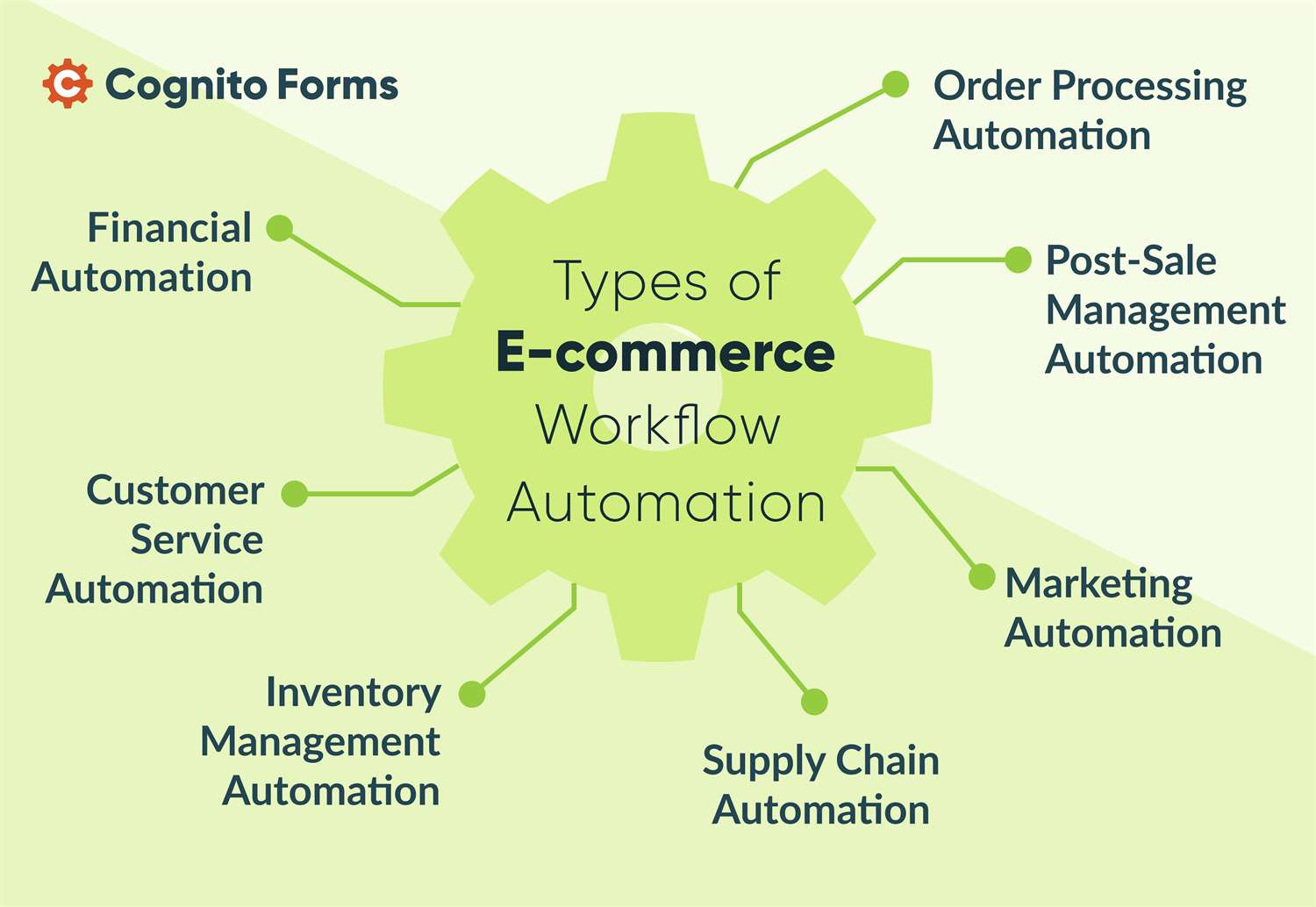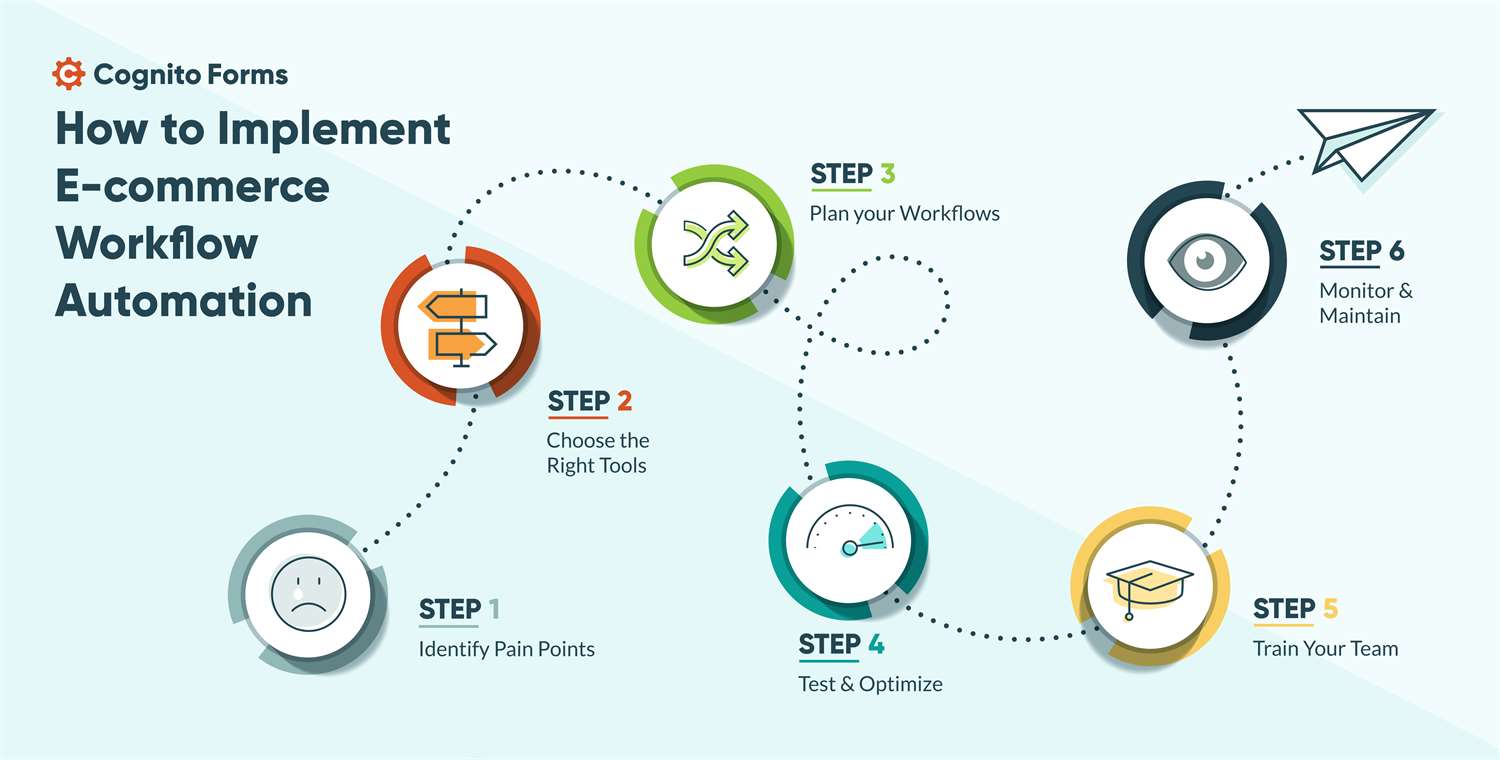Are time-consuming, repetitive tasks holding your e-commerce business back from reaching its full potential? Discover how e-commerce workflow automation can revolutionize your operations.
Staying ahead of the competition requires more than just a great product or service. It demands speed and constant availability. Customers expect seamless, 24/7 access to services and support in today’s global marketplace. Efficiency isn’t just a luxury—it’s a necessity, especially when human resources are limited, and time is scarce.
As you set up or scale an e-commerce site, you’ve likely grappled with time-consuming tasks that divert your focus from strategic growth – such as managing inventory, processing orders, and handling customer service inquiries.
E-commerce workflow automation is the game-changer that can streamline your operations, reduce errors, and free up valuable resources. Automating repetitive tasks ensures that critical processes continue uninterrupted, even outside of regular business hours. This means orders are processed, inventory is updated, and basic customer inquiries are addressed promptly at any time of day, enhancing the customer experience.
But what exactly is it, and how can it revolutionize your business?
What is E-Commerce Workflow Automation?

E-commerce workflow automation refers to the use of technology to automate repetitive and manual tasks within your online business operations. By leveraging software and tools, you can create automated processes—also known as workflows—that handle tasks such as order processing, inventory management, and customer communication without human intervention.
These workflows can be simple—like sending an automated email when a customer places an order—or complex, involving multiple systems and processes that work together seamlessly.
To grasp the full scope of e-commerce workflow automation, consider the following components:
-
Triggers: Events that initiate a workflow (e.g., a customer places an order).
-
Actions: Tasks performed automatically in response to triggers (e.g., updating inventory levels).
-
Conditions: Rules determining when and how actions are executed (e.g., if stock levels are below a certain threshold).
By defining these elements, businesses can create automated processes that operate efficiently and accurately, freeing up human resources for more strategic activities.
The Different Types of E-Commerce Workflow Automation

Automation in e-commerce can be applied across various facets of your business. Understanding these types helps identify areas where automation can have the most significant impact.
Financial automation
Managing the financial aspects of your e-commerce business:
-
Accounting integration: Syncing sales data with accounting software.
-
Invoice automation: Generating and sending invoices automatically.
-
Expense tracking: Monitoring operational costs in real-time.
Customer service automation
Enhancing customer support through automation includes:
-
Chatbots: Providing instant responses to common inquiries.
-
Automated email responses: Sending predefined replies based on customer queries.
-
Self-service portals: Allowing customers to find information and resolve issues independently.
Inventory management automation
Streamlining your inventory management to ensure efficiency and accuracy:
-
Automated Reordering: Setting up thresholds that automatically trigger reorder requests to maintain optimal stock levels.
-
Limit online order quantity: Connecting e-commerce system to inventory to limit the quantity available for sale.
-
Barcode Scanning: Integrating barcode technology to expedite inventory tracking and reduce errors.
Supply chain automation
Optimizing the movement of goods from suppliers to customers:
-
Logistics coordination: Automating communication with shipping partners.
-
Tracking and notifications: Providing real-time updates on order status.
-
Demand forecasting: Using data analytics to predict future inventory needs.
Marketing automation
Streamlining marketing efforts to increase engagement and sales:
-
Email marketing campaigns: Automating personalized emails based on customer behavior.
-
Social media scheduling: Planning and posting content automatically across platforms.
-
Customer segmentation: Categorizing customers for targeted marketing initiatives.
Post-sale management automation
Maintaining customer relationships after a purchase:
-
Feedback requests: Automatically soliciting reviews or testimonials.
-
Loyalty programs: Managing rewards and incentives for repeat customers.
-
Automated upselling/cross-selling: Suggesting related products or services.
Order processing automation
Automating the order approval process ensures that orders are promptly verified, processed, and forwarded to fulfillment centers. Key features include:
-
Payment processing: Securely handling online payments automatically.
-
Order confirmation: Sending automated emails or messages to customers.
-
Fraud detection: Utilizing algorithms to flag suspicious orders.
Benefits of E-Commerce Workflow Automation
Implementing automation in your e-commerce operations offers many benefits that can significantly impact your business’s success.
Increased efficiency Automation accelerates processes by handling tasks faster than humans can, operating without breaks or downtime. It enables quick decision-making through immediate responses to triggers, eliminating the wait for human input.
Reduction of errors Human errors can be costly, but automation minimizes mistakes by ensuring consistency—performing tasks the same way every time.
Cost savings While an initial investment is involved, automation leads to long-term savings through lower labor costs by reducing the need for manual labor in repetitive tasks.
Improved customer experience Automation enhances customer satisfaction through timely communication, keeping customers informed at every stage of their purchase journey. It enables personalization by delivering tailored experiences based on customer data, which can lead to increased customer loyalty and repeat business.
Scalability Automation allows your business to grow without proportional resource increases. It handles increased volume efficiently, managing more orders without additional staff. This flexibility enables your business to adapt quickly to market changes and scale operations smoothly.
Enhanced data management Better data handling leads to informed decision-making by collecting and analyzing insights from customer behavior. Automation generates reports automatically for performance tracking, providing valuable information that can be used for strategic planning and gaining a competitive edge in the market.
Challenges of E-Commerce Automation
While the benefits are compelling, e-commerce automation comes with its own set of challenges:
Initial Setup Costs Implementing automation tools can require a significant upfront investment in software purchases or subscriptions and possible infrastructure upgrades to support the new technologies.
Complexity Setting up automated workflows can be complex, requiring technical expertise to ensure systems integrate seamlessly.
Maintenance Automated systems require ongoing maintenance and updates to function correctly and adapt to changing business needs. Any technology brings with it the need to troubleshoot as issues arise.
Over-Automation Risks Excessive automation can lead to a lack of personal touch, potentially alienating customers who prefer human interaction. Finding the right balance is vital to help your employees and provide an excellent customer experience.

How to Implement E-Commerce Workflow Automation
Implementing e-commerce workflow automation involves several strategic steps:
1. Identify pain points Conduct a thorough analysis to pinpoint areas where automation can have the most impact.
- Assess current processes: Map out existing workflows.
- Gather feedback: Consult with team members who handle day-to-day tasks.
Identify tasks that are time-consuming, repetitive, or prone to errors.
2. Choose the right tools Select automation tools that align with your business needs, budget, and technical capabilities.
-
Compatibility: Ensure the tool integrates with your existing systems.
-
Scalability: Choose solutions that can grow with your business.
-
User-friendliness: Consider the learning curve for your team.
3. Plan your workflows Map out the processes you want to automate, detailing each step and how they connect. Identify triggers, actions, and conditions involved in the process.
- Define objectives: What do you want to achieve with each automation?
Break down each step in the process. Identify what triggers or initiates the automation, under what conditions does this apply, and what action needs to be taken when these conditions are met.
4. Test and optimize Before full-scale implementation, test your automated workflows internally to ensure they function correctly and adjust as needed.
-
Pilot programs: Start with a small segment of your operations.
-
Collect data: Monitor performance and identify issues.
-
Refine processes: Make adjustments based on feedback and results.
5. Train your team Ensure your staff understands the new systems and how to work alongside automation tools effectively.
-
Provide training sessions: Educate employees on how to use automation tools.
-
Develop documentation: Create manuals and guides for reference.
-
Encourage adoption: Highlight the benefits to gain buy-in from your team.
6. Monitor and maintain Automation is not a set-and-forget solution.
-
Regular reviews: Schedule periodic assessments of your workflows.
-
Stay updated: Keep abreast of software updates and new features.
-
Adapt to changes: Be prepared to adjust workflows as your business evolves.
Make the Change
E-commerce workflow automation is no longer a futuristic concept—it’s a present-day necessity for businesses aiming to stay competitive. By automating repetitive tasks, you can enhance efficiency, reduce errors, and provide a superior customer experience.
While challenges exist, they are outweighed by the significant benefits that automation brings. With the right tools and a strategic approach, you can implement automation seamlessly into your e-commerce operations.
Empower your business to reach new heights by embracing e-commerce workflow automation today.
How Can Cognito Forms Help With Workflow Automation?
Cognito Forms is a versatile tool that simplifies the creation and management of automated workflows in e-commerce. When your current e-commerce software isn’t quite right for your business needs, you can build custom order or sales forms, collect payments, track shipments, and manage inventory.
Key features of Cognito Forms:
-
Customizable templates: Create forms tailored to your business needs without coding.
-
Workflow automation: Directly automate processes like order approvals, inventory updates, and customer notifications within the platform.
-
Integration capabilities: Connects seamlessly with existing systems through built-in integrations or third-party integration apps.
-
Data management: Collect and manage customer data securely, enhancing your marketing and sales efforts.
By leveraging Cognito Forms, you can overcome the challenges of implementing automation, thanks to its user-friendly design and robust functionality.

